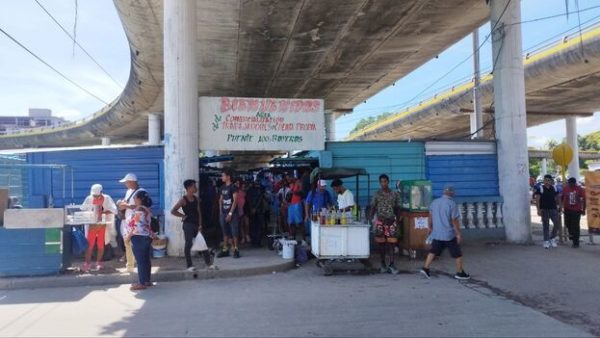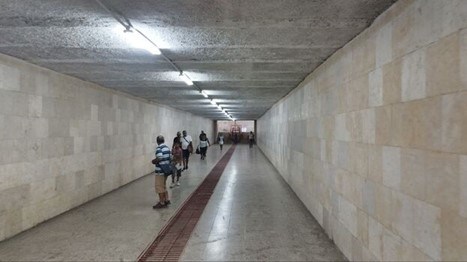The Candonga, a Havana Street Market that Has Everything

By Juan Diego Rodriguez (14ymedio)
HAVANA TIMES – For Cubans, “to live under a bridge” means to have fallen from grace, to be reduced to poverty. However, the daily swarm of vendors, buyers, dealers, pickpockets, drunkards and fortune seekers under the bridge at 100th and Boyeros in Havana belies that old saying. This is a candonga, a human anthill where everything, even prosperity, is for sale.
It’s mid-morning and traffic is at its peak. Boyeros is one of the city’s main arteries, running from the Carlos III shopping mall to the José Martí airport. It serves as Havana’s western entryway. In the 1990s, the candonga — the name originated in Angola, where it connotes an open-air street market — was a clandestine operation in a makeshift space. It used to be said that if a fugitive managed to reach Boyeros, he could assume he was safe from the police. When government agents show up here, which can happen at any time of day, vendors grab their tents, tables, blankets, umbrellas and wares, and run.
What saved the candonga was its location. From nearby Boyeros Avenue, along which every imaginable vehicle passes, including pricey air-conditioned cars ferrying tourists, the hustle and bustle is hidden from view. Supplied by a constant stream of “mules” arriving from Florida, Panama and elsewhere, it is the largest open-air market in Havana, overshadowed perhaps only by La Cuevita in San Miguel del Padrón.
You could be checking out a pair of sneakers or handing over a thick wad of cash when, all of a sudden, all eyes look upward. A heavy truck travelling along the elevated roadway shakes the concrete structure. True, it’s not a strong jolt but it is enough to cause the imagination to do what it does. Everyone is suddenly aware just how fragile the vendor’s booths, located under this overpass to protect them from the sun and occasionally the rain, really are.
Fear, however, should not lead you to let down your guard. Best beware of the lads standing beneath a hand-painted sign that reads, “Welcome to the self-employed workers’ marketplace.” They are waiting for you to become even slightly distracted so they can slip their hands behind your back and snatch your wallet.
An almost spotless, very well illuminated tunnel connects the candonga with the other stretch of the avenue. If no one has managed to steal its fluorescent light bulbs, it is because they are out of reach, too high for a thief without resources.
It goes without saying — to paraphrase another Cuban maxim — that they have what you’re looking for. It’s all at the candonga. From an electric fan to a coffin, from a light bulb to a candle, items you might still find useful in the afterlife.
But have no illusions. The merchants here sell what they can get, which is stuff that can be bought for cheap overseas and sold for extravagant prices in Cuba. There is a term for this kind of junk: “Mickey Mouse” merchandise, which connotes plastic objects that break easily, as in a Disney movie.
But that’s not all. At the candonga you can also get raw and cooked food, any kind of spare part (if you are willing to pay the price), handicrafts, imported clothing, bicycles, helmets, cables and canned goods.

The vendors here abide by the law of the jungle. No one is anyone else’s friend and that is reflected in the prices. An electric shower that costs 5,000 pesos at one stall will be 4,500 at another nearby. Customers get the same treatment, though it might be a little less hostile if you’re lucky.
The price of sneakers can vary from 2,500 to 8,000 pesos. Flip-flops go for 2,000. Handmade footwear, the best kind, for 1,000 to 2,800. Short stockings for 400. Not very supportive bras for 700; bluetooth speakers for 25,000. Nuts and bolts for the exorbitant price of 10 pesos apiece.
Food has the widest price range. Mango is often 20 pesos a pound, yucca costs 60 and a single banana goes for 160. A bottle of water will cost you 300. Prices for meat, whether it be for chicken or ground meat, are in a class by themselves. This is the purview of the shadiest vendors and the price depends on how well you can haggle.
Some merchants do not mince words and react badly when questioned. A young man was looking over at a pair of brand-name sneakers for 2,500 pesos – a price too good to be true – and wanted to know if they were knockoffs. “Of course not,” the saleswoman replied without hesitation. “Let me see?” When she picked up the shoes, she noticed that the label was not correct and put them back down. “Well, at that price what do you expect?” the saleswoman snapped, shrugging her shoulders.
A term you will often see at the candonga is “one size.” It refers to stretchy clothing that will fit a thin body as well as a plump one. The seller’s trick is to ask the potential customer his or her size and return with any random item of clothing. “It there’s no size indicated, it must mean one size fits all,” the vendor tells the interested party with a smile.
For visitors who do not want forget the experience, there are those who will sell you a photo that captures the moment.
One leaves the candonga exhausted, with a bag full of purchases, dodging pickpockets along the way. Just outside are the inspectors, standing in the middle of the road and directing cars with official license plates — the ones always reluctant to stop and pick up strangers – which load up with passengers ready to leave. The advice from the most experienced shoppers, however, is to not spend all your money. You will need some of it to find a taxi home.
Translated by Translating Cuba





